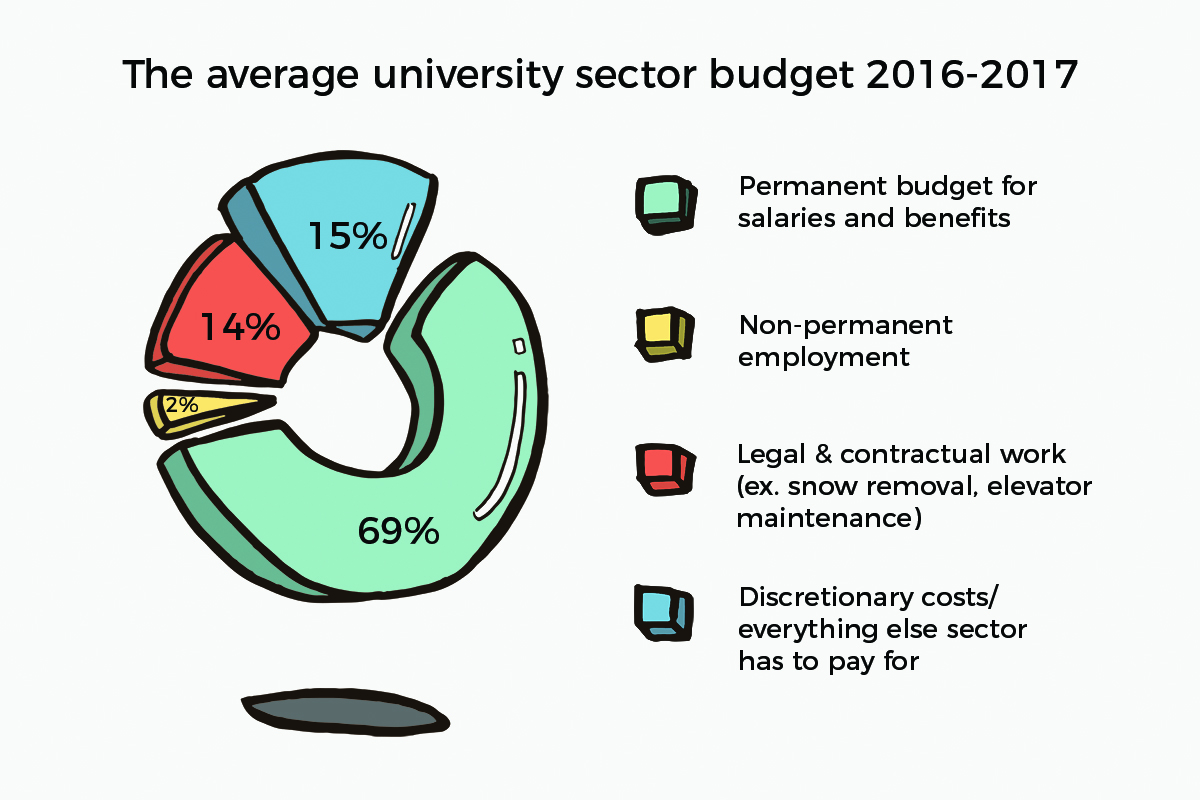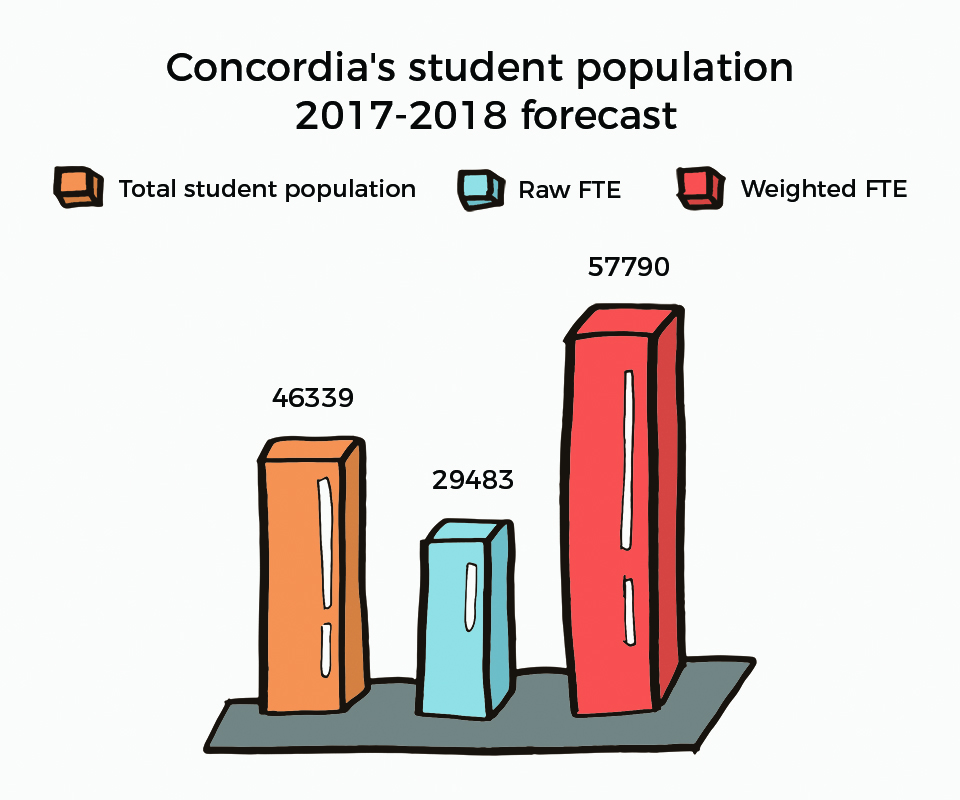Chief financial officer and senior director of financial planning and budgets sit down with student newspapers
Here’s what we learned at Concordia’s “Budget Talk” meeting with chief financial officer Denis Cossette, Jean-François Hamel, the senior director of financial planning and budgets, and director of public relations, Mary-Jo Barr.
Key Facts:
- Concordia University plans to eliminate its deficit within two years.
- The university projects a deficit of $3,9 million for the upcoming fiscal year, running from May 1, 2017 to April 30, 2018.
- The projected deficit is $2.4 million lower than last year’s anticipated deficit of $6.3 million.
“We get our funding from the provincial government,” Hamel said. “They control the pricing they give us for grants. Tuition fees are controlled by the provincial government. We have little control on our revenue.”
- Projected total revenue: $473.7 million
- Projected total expenses: $477.8 million
Graphics by ZeZe Lin
Sixty per cent of Concordia’s revenue comes from the Quebec government through grants which are given based on the student population. According to Hamel, “if Concordia’s student body diminishes, our revenues diminish,” adding that any increase in university funding is usually lower than the increase in costs the university incurs.
Concordia receives $127 million in tuition fees, $47 million of which is clawed back by the government, leaving the university with $80.3 million. After these clawbacks are calculated, tuition fees represent approximately 18 per cent, or $85 million, of the university’s total revenue. This figure excludes student services as well as other enrolment fees.
- Salaries and benefits make up over 70 per cent of the university’s expenses.
- Forty-six per cent of salary distribution goes to university staff, while 54 per cent is put towards teaching and research.
- Facility maintenance costs the university $45 million per year.
Concordia will reinvest $13.2 million from new funding towards raising faculty budgets. Five million of that will go towards scholarships, graduate student support as well as teaching and research assistant contracts.
- Concordia University’s estimated student population: 46,339
There are 29,483 raw full-time equivalent (RFTE) students and 57,790 weighted full-time equivalent (WFTE) students at Concordia. A RFTE student is someone taking 30 credits per year. Students with varying credits, however, are combined with other students to reach 30 credits a year in the calculation of RFTE students. So, for example, if one student has 21 credits and another has nine, they amount to one RFTE student.
- For every RFTE student, the university receives $1,659 from the provincial government.
WFTE students are calculated according to the student’s program and degree. Students in programs that require more lab time, as well as graduate and Ph.D students, weigh more than, for example, an undergraduate student at the John Molson School of Business. The higher the student’s weight, the more funding the university receives.
- For every WFTE student, the university receives $3 500 from the provincial government.
Graphics by Zeze Lin
An earlier version of this article stated that Concordia University received $6,059 rather than the correct amount $1,659. We apologize for this error.





